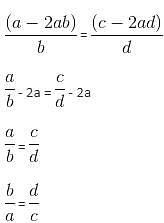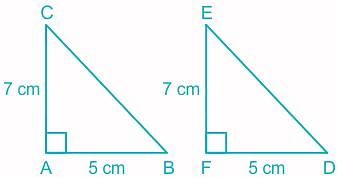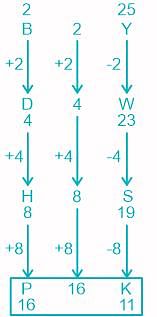AP TET Paper 1 Mock Test - 4 - AP TET MCQ
30 Questions MCQ Test AP TET Mock Test Series - AP TET Paper 1 Mock Test - 4
In order to avoid gender stereotyping in class, a teacher should:
Mainstreaming and inclusion are the parts of which of the following integration?
A student of V- grade with 'visual deficiency' should be:
The purpose of Continuous and Comprehensive Evaluation is
What is the main factor for teachers at the starting of their careers?
निम्नलिखित अनुच्छेद को ध्यान से पढ़कर उससे संबंधित प्रश्नों के उत्तरों का सही विकल्प चुनिए:
हम सब की मिली-जुली ज़िंदगी में कला के रूपों का ख़ज़ाना हर तरह बेहिसाब बिखरा चला गया है। सुंदरता का अवतार हमारे सामने पल-छिन होता रहता है। अब यह हम पर है, ख़ासतौर से कवियों पर, कि हम अपने सामने और चारों ओर की इस अनन्त और अपार लीला को कितना अपने अंदर बुला सकते हैं। इसका सीधा-सादा मतलब हुआ अपने चारों तरफ़ की ज़िंदगी में दिलचस्पी लेना, उसको ठीक-ठीक यानी वैज्ञानिक आधार पर समझना और अनुभूति और अपने अनुभव को इसी समझ और जानकारी से सुलझाकर स्पष्ट करके, पुष्ट करके अपनी कला-भावना को जगाना। यह आधार इस युग के हर सच्चे और ईमानदार कलाकार के लिए बेहद ज़रूरी है। इस तरह अपनी कला-चेतना को जगाना और उसकी मदद से जीवन की सच्चाई और सौंदर्य को अपनी कला में सजीव से सजीव रूप देते जाना : इसी को मैं 'साधना' समझता हूँ, और इसी में कलाकार का संघर्ष छिपा हुआ देखता हूँ। कला में भावनाओं की तराश-खराश, चमक, तेज़ी और गर्मी सब उसी से पैदा होंगी, उसी 'संघर्ष' और 'साधना' से, जिसमें अन्तर-बाह्य दोनों का मेल है। कला के इस सौंदर्य और उससे मिलने वाले आनंद के शत्रु वे जहाँ और जिस भेष में भी होंगे, जो भी होंगे-परिस्थितियाँ, व्यक्ति या दल-हर ईमानदार कलाकार के शत्रु होंगे।
कला जीवन का सच्चा दर्पण है। और आज के सभी देशों के जीवन में कायापलट तेज़ी के साथ आ रही है; क्योंकि आज किसको नहीं दिखाई दे रहा है कि यह क्रान्ति का युग है। थके हुए पुराने कलाकारों की आहों को भी उससे चमक मिलती है। नयों की तो वह काव्य सामग्री ही है ; क्योंकि वही उनके और उनके आगे की पीढ़ियों के लिए नये, उन्मुक्त, सुखी, आदर्श जीवन की नींव डालनेवाला है।
Q. उपर्युक्त अनुच्छेद के अनुसार कलाकार के लिए जरुरी नहीं है:
Read each of the following passages and answer the questions by selecting the most appropriate option.
Scotland Yard is the headquarter of the Criminal Investigation Department of London Metropolitan Police of Britain. It was established in 1878. It is named from its original location in Scotland Yard, off Whitehall. Officers who work here are involved in solving serious crimes. This police force looks after about 10 million people living in Greater London.
A police force of over 18,000 men and women is controlled from here by the Commissioner. Here, too, is the famous Information Room, working day and night, which receives information in a few seconds by telephone, radio and electronic devices about every incident in London, very important to the police. A special department deals with public relations, conducts tours, distinguished visitors, the Press and so on.
A daily newspaper edited and printed by the Scotland Yard contains particulars of persons `wanted' by the police with detailed descriptions of criminals and their photographs. A copy of the paper reaches every police station in the country. Scotland Yard catches crooks. Every convicted criminal finds a place on the index of the Criminal Record Office- his height and build, colour of hair and eyes, fingerprints, and above all, his way of going about crime. The criminal record office has records and they are used by the various police forces throughout the country.
The Scotland Yard has a map room. Here huge maps of London are hung. Some maps show every street and house. There is a crime map, made up at 8 o'clock every morning. It shows by pinned coloured flags every crime that has been committed in London. There is also a Traffic Map, showing from day to day where the most dangerous areas are in the city. The standard of police work set up a century and a quarter ago, perhaps the finest and the most scientific in the world, is maintained by the Scotland Yard.
Q. What does the traffic map show?
I build walls
Walls that protect,
Walls that shield,
Walls that say I shall not yield
Or reveal
Who I am and how I feel
I build walls
Walls that hide,
Walls that cover what’s inside,
Walls that stare or smile or look away,
Silent lies,
Walls that even block my eyes
From the tears I might have cried.
I build walls
Walls that never let me
Truly touch
Those I love so very much .
Walls that need to fall !
Walls mean to be fortresses
Are prisons after all.
Q. In the second stanza, the 'silent lies' refer to
Direction: Read the following passage carefully and answer the given questions.
Once upon a time, there was a greedy merchant who owned a magnificent horse. The horse was strong and fast, and the merchant was proud of it. He would often travel long distances with the horse to trade goods and make a profit.
One day, the merchant had to travel to a faraway city to sell his goods. He decided to take his horse with him as he knew it could cover the distance quickly. However, he didn't consider the fact that the horse would need rest and care along the way.
As they started their journey, the merchant pushed the horse to go faster and faster, not stopping for breaks. The horse was getting tired and was unable to keep up with the merchant's demands. The merchant didn't care and continued to ride the horse harder, thinking only of his profit.
As they travelled further, the horse began to slow down, and its breathing became laboured. The merchant didn't take notice and kept pushing the horse until it eventually collapsed on the ground, exhausted and unable to move.
The merchant was angry and frustrated that his horse had failed him. He cursed the animal and tried to force it to get up, but the horse was too weak to move. Realizing that he wouldn't be able to reach his destination without a horse, the merchant decided to leave the animal behind and continue on foot, leaving the exhausted horse on the side of the road.
Days later, the merchant finally reached his destination, but he had lost a lot of his merchandise along the way. He realized that his greed had led to his downfall, and he regretted his actions towards the horse. He wished he had taken better care of it and had considered its needs.
From that day on, the merchant vowed to treat his animals with kindness and respect and not to let his greed get in the way of his morals. The lesson he learned was that sometimes, taking a break and looking after yourself and those around you is more important than making a profit.
Q. Why merchant travel long distances with his horse?
Read the passage and answer the following questions.
There is a lovely story of a tree and a little boy who used to play in its shade. They had become friends. One day, the boy sat leaning against the trunk of the tree, crying. He was hungry. "Eat my fruit" said the kind tree bending down one of its branches. The boy ate the fruit and was happy. The boy grew up. One day, he sat under the tree with an anxious look on his face. "What is the matter?" asked the tree. "I am going to marry and I want a house to live in," said the young man. "Cut down my branches and build your house." said the tree. The young man built a house with the branches of the tree. The young man became a sailor. One day, he sat under the tree with a worried look. "What is the matter?" asked the tree. "My captain is a cruel fellow. I want a ship of my own." said the sailor. "Cut down my trunk and build a ship." The sailor lost his ship and returned home as a helpless old man. On a cold winter's day, he stood where the tree once was, leaning on his stick and trembling with cold. "Make a fire of me, and warm yourself' said the stump of the tree. The stump of the unselfish tree burnt in the fire, softly humming a tune.
Q. The word unselfish in the line: "The stump of the 'unselfish' tree"
Examine the following matchstick patterns.
If the pattern continues, how many matchsticks are needed in the 15th stage?
The teaching methodology of Maths has become quite old and as a result, the students are lacking interest in the subject. Therefore, modernisation in training of mathematics can be branched out in terms of
In ΔABC and Δ DEF, AB = 5 cm, AC = 7 cm, ∠A = 90°, FD = 5 cm, EF = 7 cm and ∠F = 90°. Then,
Find the missing term in the following series:
B2Y, D4W, H8S, ______
A rhombus has diagonals of length 8 cm and 6 cm. Find its perimeter:
Rizul is a kinesthetic learner. His teacher Ms. Neha understood his style of learning. Which of the following strategies should she choose to clear his concept of multiplication?
Which method was used in the below solution?
Given:
b/a = d/c
To prove: d(c - 2b) = d (a - 2ab) = b(c - 2ad)
Solution: d(a - 2ab) = b(c - 2ad)

Durga lives in a village and cooks food on a chulha (earthern stove) using wood or cow dung cakes as fuel. She has been suffering from severe cough for the last three months. This may be due to the:
Which of the following is a dance as well as a festival?
Psychological environment broadly explains the natural and social environments and learning and informational environments. In order to explain this psychological environment, what was used by Kurt Lewin?
In which of the following part of our country do people grow eatables such as tapioca and coconut in their courtyards, and they find food prepared using these to be very tasty?
Pochampally is a village which is famous for the special cloth which is also called Pochampally. This village is a part of _____.
Environmental factors that shape the development of a child include all of the following except:
|
30 tests
|





















